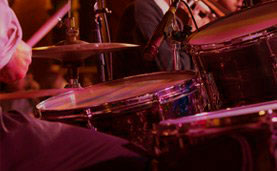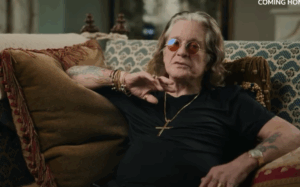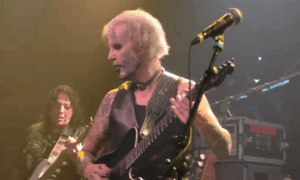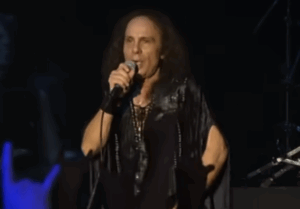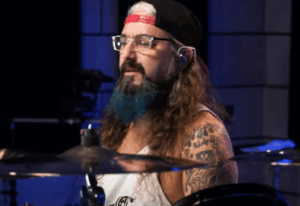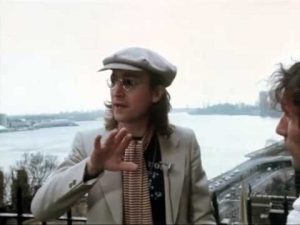How Wolfgang Van Halen Evolved Since Childhood

via Guitar Interactive Magazine / YouTube
Wolfgang Van Halen’s journey has never been about living in someone else’s shadow. From a young age, he was exposed to the pressures and privileges that come with being the child of a rock icon. Yet instead of clinging to that legacy, he quietly began shaping one of his own—piece by piece, performance by performance.
His evolution wasn’t sudden or flashy. It was gradual, marked by discipline, experimentation, and a deep commitment to his craft. As he grew up, he transitioned from playing behind the scenes to stepping confidently into the spotlight, never once rushing the process. Each phase of his life revealed a new layer of his identity—not just as a musician, but as a determined artist navigating a noisy world.
Now recognized for his solo work and critical acclaim, Wolfgang has transformed himself from a name people knew to a name people respect. His story isn’t just about music—it’s about growth, resilience, and the quiet courage it takes to forge your own path when everyone expects you to follow someone else’s.
View this post on Instagram
Drumming Beginnings
Wolfgang’s musical spark ignited early. At just six years old, he was already experimenting with guitar, but it was at nine that he found his footing behind a drum kit. Watching his uncle Alex Van Halen rehearse was a turning point. He began teaching himself using drumming magazines and raw instinct. With his father’s encouragement, he received a Roland electronic drum kit, followed by an acoustic set for his tenth birthday—a sign that his interest had already become something deeper.
Those formative years weren’t just child’s play; they established a foundation for the musical versatility he’s known for today. Wolfgang credits his drumming roots for giving him a solid sense of rhythm, a trait that would eventually bleed into his guitar and bass playing. The drums weren’t simply a gateway to other instruments—they were where he first began to understand music structurally and emotionally.
Despite growing up in a famous household, Wolfgang’s early drive came from within. He was known to lock in hours practicing a range of tracks, from Blink-182’s Enema of the State to Van Halen staples. This wasn’t a kid being pushed—it was a kid pulling himself forward. That discipline set the tone for a lifetime of self-directed creativity.
View this post on Instagram
Striking Out Solo
At age twelve, Wolfgang added guitar to his expanding toolkit. Rather than leaning on his father’s legacy for shortcuts, he took a more self-reliant approach—learning by reading tablatures and practicing on his own. For his school graduation, he performed the instrumental “316,” a piece Eddie Van Halen had written in honor of his birth, marking a personal and symbolic milestone.
His independence wasn’t an act of rebellion; it was a conscious choice to define himself. He steered clear of becoming a mere reflection of his father and instead gravitated toward modern bands like System of a Down, absorbing their sound and structure. His goal was never imitation, but creation—developing a voice uniquely his own in a saturated genre.
By his mid-teens, Wolfgang was proficient on drums, guitar, and bass. This multidimensional talent would later be pivotal for Mammoth WVH, his solo project where he wrote, performed, and recorded everything himself. What began as casual experimentation evolved into a serious, self-sustained creative engine that could stand entirely on its own.
View this post on Instagram
Facing Backlash
In 2007, Wolfgang took a leap into the public spotlight, replacing Michael Anthony as the bassist for Van Halen during their high-profile reunion tour. At just fifteen, he stepped into the shoes of a veteran musician in a band with a fiercely loyal fan base. The response wasn’t all welcoming—many fans dismissed his involvement as nepotism, ignoring the skill and preparation that got him there.
Wolfgang didn’t shy away from the criticism, though he admitted it was a lot to process. He later recalled, with a touch of humor, that he had become “the biggest enemy of every forty-to-fifty-year-old man out there.” Despite the backlash, he pushed forward, touring relentlessly and contributing to the 2012 Van Halen album A Different Kind of Truth.
What could’ve been a career-defining detour became a crash course in resilience. Rather than lashing out, he learned to filter out the noise, recognizing the difference between valid critique and blind nostalgia. In time, he proved his place on stage wasn’t just earned—it was deserved, built on both hard work and talent.
View this post on Instagram
Expanding Horizons
After years touring with Van Halen, Wolfgang was ready to broaden his musical horizons. In 2012, he joined Mark Tremonti’s solo band, playing bass and contributing backing vocals. This chapter gave him new creative outlets and helped refine his stage presence outside the context of his family’s legacy. He recorded two albums with the group, Cauterize (2015) and Dust (2016), both well-received in hard rock circles.
More than just a side gig, Tremonti’s band became a proving ground for Wolfgang’s songwriting confidence. Producer Michael Baskette, who worked on those records, played a pivotal role in encouraging him to explore solo work. These experiences gave him both technical skills and the reassurance that he didn’t need a famous surname to be taken seriously.
Perhaps most importantly, this period connected the dots between ambition and execution. Wolfgang wasn’t just someone who could play a wide range of instruments—he was a musician ready to lead. Tremonti’s camp believed in his vision, and that belief helped unlock the next major step in his journey.
View this post on Instagram
Solo Debut with Mammoth WVH
Wolfgang’s solo debut, released under the name Mammoth WVH in June 2021, was the result of nearly a decade of writing, recording, and refining. This wasn’t just a passion project—it was a personal manifesto, shaped by years of touring, growth, and profound loss. The album’s title paid homage to the original name of Van Halen, but its sound was distinctly his.
Playing every instrument and writing every song himself, Wolfgang poured every ounce of himself into the album. The process was long and emotional, marked by anxiety, grief, and the pressure of public expectation. Still, it became a creative rebirth. He described it as a healing process—both a tribute and a declaration of who he was without the echo of his father’s chords.
The single “Distance,” written in honor of Eddie Van Halen, captured the emotional weight of his journey. The song debuted at number one on multiple rock charts and earned a Grammy nomination, cementing Mammoth WVH as more than just a side project. It was a full-circle moment—proof that Wolfgang had not only inherited a legacy but redefined it on his own terms.
View this post on Instagram
Stepping Into the Spotlight
Wolfgang’s solo career took a brave leap forward in July 2021, when he performed his first official Mammoth WVH concert in Lawrence, Kansas. Though the show was held in an intimate 350-capacity venue, it was far from casual for him. The weight of expectation and years of buildup triggered intense stage fright and anxiety—an internal battle he had to face head-on from the moment he stepped on stage.
That experience didn’t slow him down. Shortly after, he embarked on his first major tour as Mammoth WVH, opening for Guns N’ Roses on a national run. The shift from a small club to massive arenas symbolized more than professional growth—it showed personal resilience and a rapidly evolving stage presence. He was no longer the uncertain teen in a legacy band, but a bandleader coming into his own.
By fronting his own project, Wolfgang made a definitive statement: he wasn’t just a supporting player or the son of a rock icon—he was a full-fledged frontman. This moment marked a clear turning point in his career, where he stopped being part of someone else’s show and started leading his own.
View this post on Instagram
Mammoth II and Growth (2023)
When the world went quiet during the COVID lockdowns in 2020–21, Wolfgang took the opportunity to keep creating. He began writing new material for a follow-up to his debut album, experimenting with different styles and instruments. The demos included more emotional range, with even piano ballads making their way into the mix—evidence of his expanding artistic palette.
Released in August 2023, Mammoth II made a strong impact, topping the Billboard Hard Rock Albums chart and landing at No. 28 on the Billboard 200. The album was well-received by fans and critics alike, reinforcing his standing as a rock musician in his own right—not just a one-album wonder or a novelty act trading on his last name.
Like before, Wolfgang played every instrument himself. Tracks such as “Another Celebration at the End of the World” and “I’m Alright” pushed his sound forward while maintaining a strong identity. With Mammoth II, he didn’t just follow up on success—he expanded it, proving he had more to say and more ways to say it.
View this post on Instagram
Honoring the Past, Embracing the Present
Wolfgang has consistently maintained that he won’t play Van Halen songs live as part of his own act. For him, this isn’t about rejection—it’s about respect. He’s made it clear that he wants to build his own musical legacy, not reenact someone else’s. That rule remained firm until 2022, when he took the stage at two Taylor Hawkins tribute concerts and performed Van Halen classics like “Hot for Teacher” and “Panama.”
Those performances were heartfelt exceptions. As he explained, if he was going to play his father’s music publicly, it had to be for the right reason and done the right way. The Wembley Stadium performance in particular was a global moment—equal parts emotional homage and technical triumph, and a rare window into how deeply he honors his father’s legacy without relying on it.
These selective tributes reflect the balance Wolfgang has learned to strike: he acknowledges the legacy he comes from, but refuses to let it define him. He’s built his identity not by erasing the past, but by deciding when and how to engage with it—always on his own terms.
View this post on Instagram
Personal & Shared Moments
Outside the studio and spotlight, Wolfgang has cultivated a strong personal life. In October 2023, he married longtime partner Andraia Allsop in a touching ceremony at their Los Angeles home. The event was rich with symbolism: his mother, Valerie Bertinelli, walked him down the aisle to the tune of “316,” the instrumental Eddie had composed for his birth, and an empty chair was reserved in tribute to his late father.
Their bond as a family extended beyond the wedding. In May 2025, Valerie made a surprise appearance in the horror-themed music video for Wolfgang’s song “The End,” directed by filmmaker Robert Rodriguez. Her performance was described as “savage and relentless,” a fun yet meaningful collaboration that blended family and art in a new medium.
These moments show how Wolfgang continues to evolve not just as a musician, but as a son, husband, and creative collaborator. By integrating personal life into his work, he’s building a career that’s not just musically rich, but emotionally grounded—reflecting not only growth, but authenticity.
View this post on Instagram


